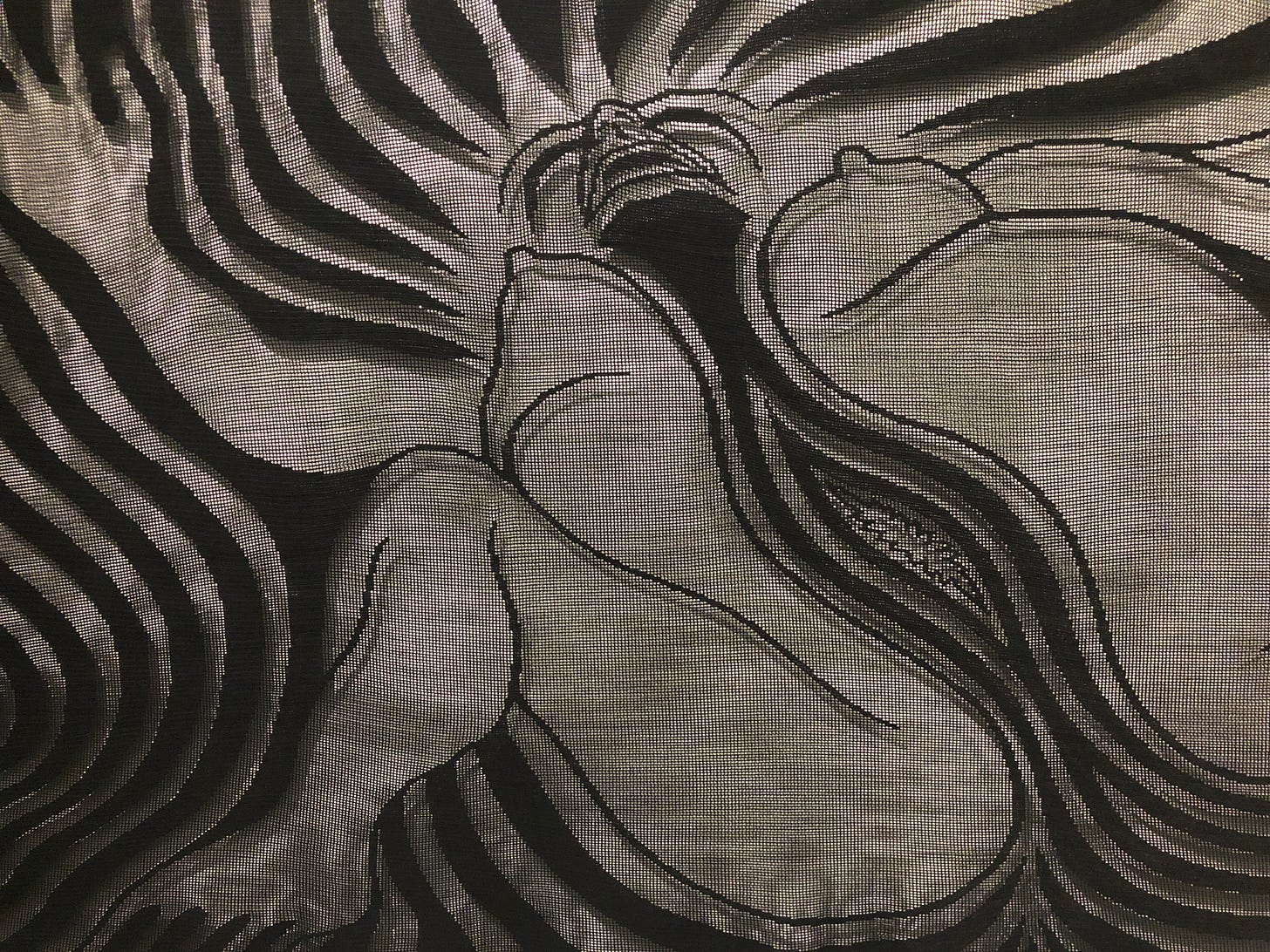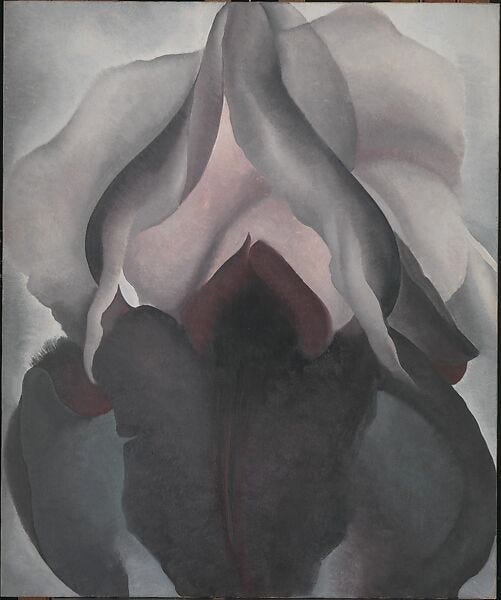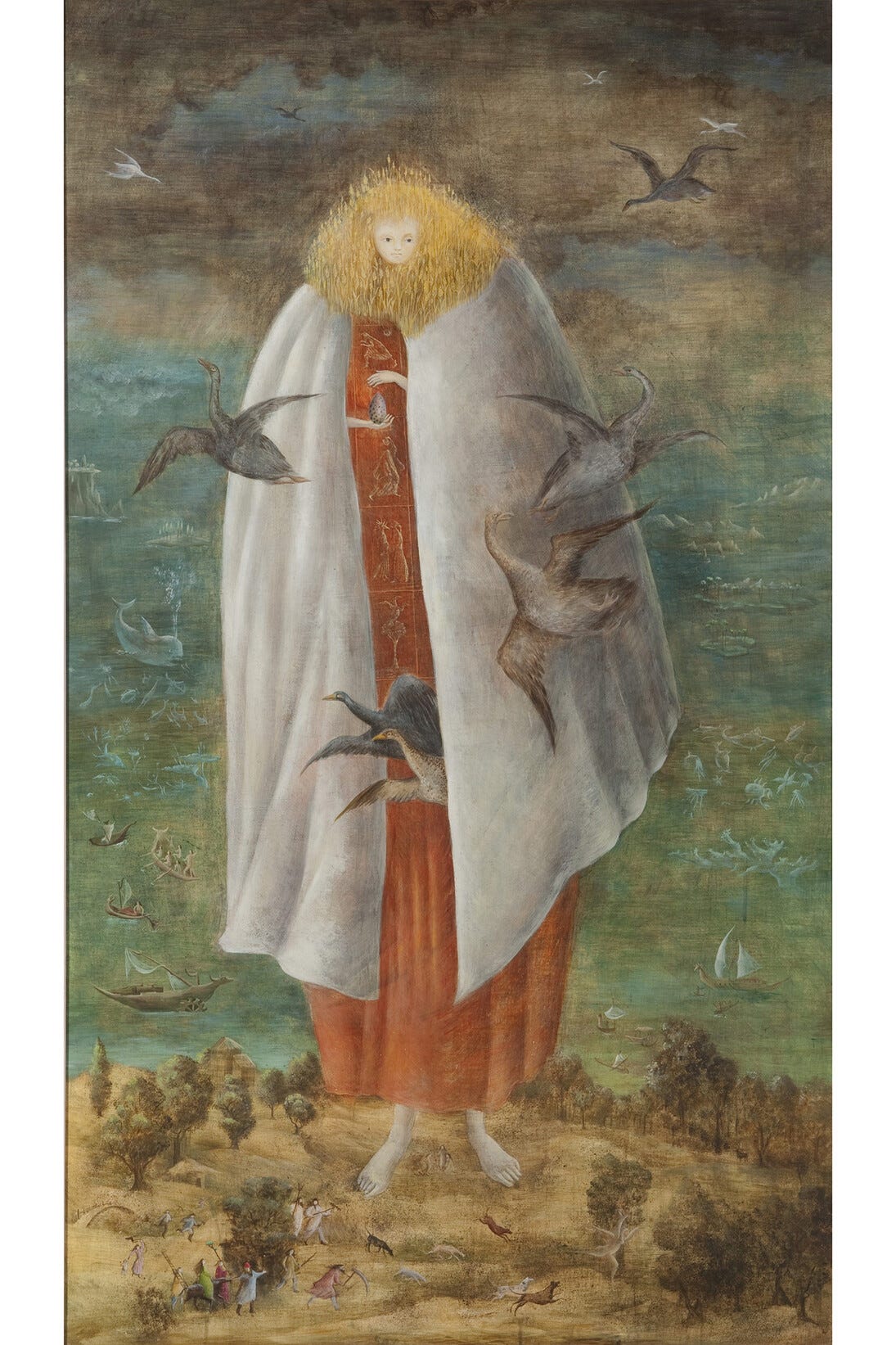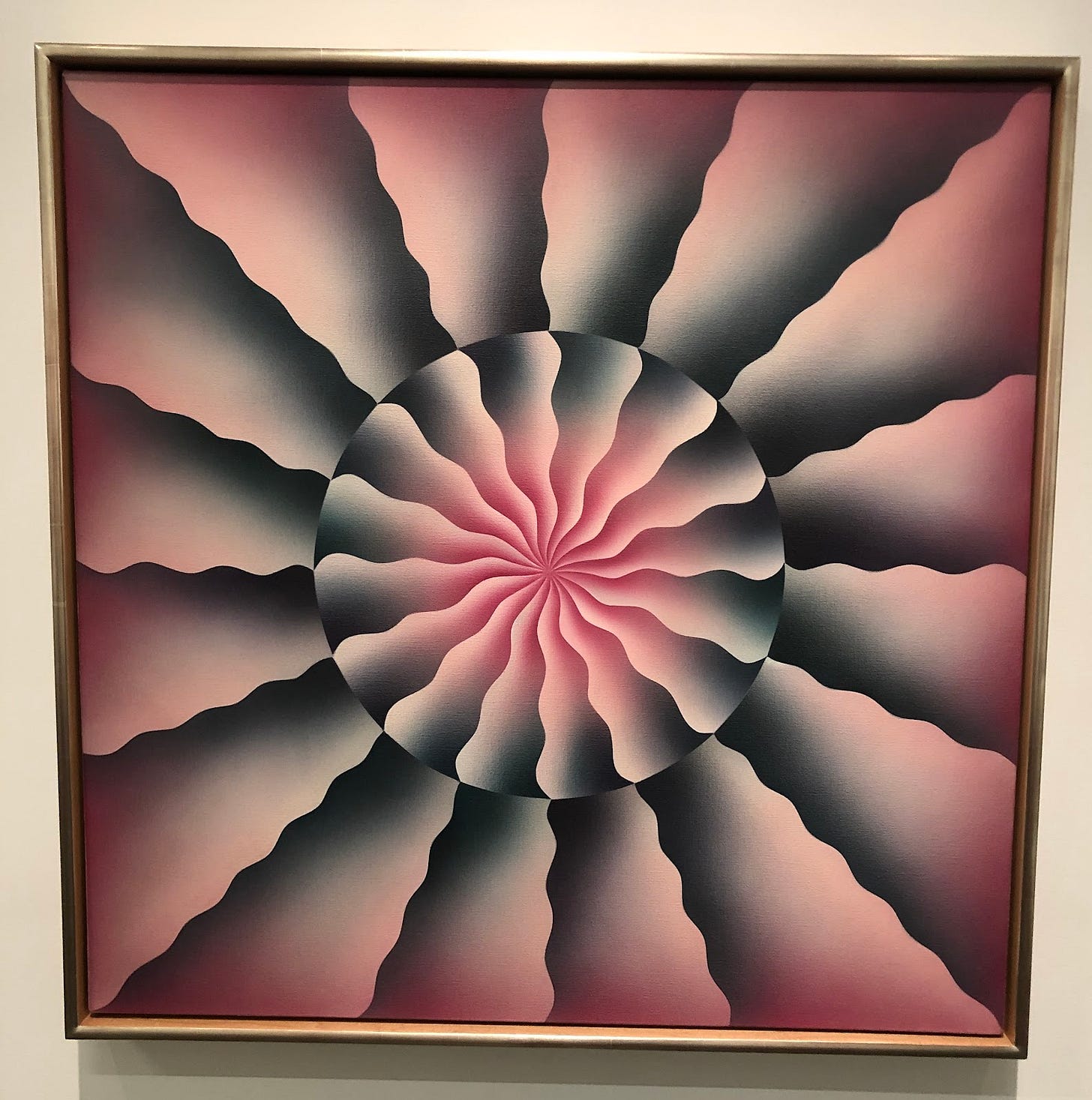During the 1960s, the standard art history textbook in American universities was Janson’s History of Art, a thick 500+ page tome, Eurocentric, with not a single mention of any female artist.
That was the situation when the young woman born Judith Cohen was studying in California at UCLA to become an artist.
To fit in with her male peers she wore boots and smoked cigars, and made minimalist abstract art.
But she never felt comfortable in the patriarchal straitjacket, or with her husband’s surname, and in 1970 made a decisive change, taking out an ad in Artforum magazine to announce her chosen new name.
In Manhattan currently there is a large retrospective of Judy Chicago’s work on display on multiple floors of The New Museum.
Starting in the 70s Chicago found a new way of working, designing many large projects with volunteer collaborators — weavers, needleworkers, ceramicists, and others, often women working on pieces from their own homes. Her Birth Project series, and The Dinner Party, would not have been undertaken by any male artist.
The unusual fourth-floor section of the exhibit is being called her “introspective” — a curated collection of some of the female artists in Western culture who were excluded from the old Janson textbook.
This is an alternative history of Western art, inspired by the 15th Century utopian book The City of Ladies.
Early in her career Chicago had to research this “invisible” lineage of female artists to create a new pantheon for herself.
Now, decades later, she has the opportunity to present her own utopian exhibit of this lineage.
On display are illustrated manuscripts from the 11th century mystic Hildegard von Bingen, abstract art from Hilma af Klint, Black Iris from Georgia O’Keeffe, and many others.
My own favorites: surrealist paintings from Frida Kahlo, Dorothea Tanning, Leonora Carrington, Remedios Varo, and Leonor Fini.
The museum has six decades worth of Chicago’s work on display. Given such a long span, of course there are some failures — her worthy intentions don’t always produce great art. (And hey, over the same timespan even The Rolling Stones made some dud albums.)
But there are many terrific pieces, in a variety of different media.
Now 84 years old and still actively working, Judy Chicago has lived to see a Manhattan museum do an exhibition completely devoted to her work and to other female artists — which she couldn’t have even dreamed of as a young student looking at Janson’s History of Art.
_____________________________
NOTES:
The Judy Chicago: Herstory exhibit is on view at The New Museum through January 14 2024
In 1987(!!!) the fifth edition of Janson’s textbook History of Art was finally revised to name a handful of female artists.
All Judy Chicago artworks shown are copyright by the artist and her collaborators or associated owners.
All other artworks shown are copyright by the owners or the estates of the late artists.





















Thank you for this absolutely wonderful article. Astonishing that a book purporting to be a history of art would have only male artists in it. I would boycott it not because it is an affront but because it lacks any credibility. It was only last year that I first heard of Judy Chicago and was stunned by The Dinner Party. In June I put out a post about a British artist who co-founded and was the only acknowledged female member of the British Pop Art movement. Pauline Boty. Not a household name and I have no idea why, so I wrote a tribute to her. We are doing our bit to publicise wonderful female artists, Patrick! (I also love Paula Rego!)
Fascinating! Thanks, Patrick